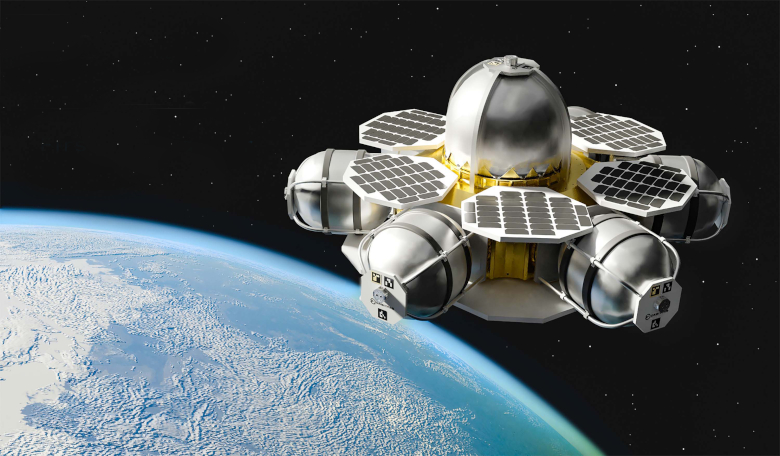US startup firm Orbit Fab has announced it will be launching the first propellant tanker to geostationary orbit via a SpaceX rocket in late 2022 or early 2023.
Known as “Tanker-002,” the spacecraft will be used to refuel large space assets approximately 36,000 kilometres (~22,300 mi) above the Earth’s surface.
Essentially a gas station in space, Tanker-002 will have the capability to store propellant for up to 15 years, and when it’s not making a fuel delivery, the tanker will be parked a few hundred kilometers away from the geostationary belt so as not to clutter up the orbit, says James Bultitude, Orbit Fab’s Chief Engineer.
“This is the first tanker in this orbit, and Spaceflight has come up with a new way to get us there efficiently. Hydrazine fuel will be available for delivery as soon as it arrives, though we intend to take some time to demonstrate our long-term storage technology”, Bultitude says.
Tanker-002 is sharing a lift to space with Intuitive Machines’ IM-2 lunar lander, courtesy of GeoJump, which is offering rideshare missions to GEO in partnership with Spaceflight.
Following separation from the launch vehicle, GeoJump will use a lunar flyby trajectory to slingshot the tanker around the Moon approximately 9,400 kilometres above the lunar surface.
This trans-lunar Injection propulsive manoeuvre means that a spacecraft can get to GEO in two weeks instead of 6 months, with minimal radiation exposure.
As the Tanker-002 name might suggest, this is Orbit Fab’s second tanker; the first – Tanker-001 Tenzing – is a 35 kilogram small satellite tanker designed to store green propellant (high-test peroxide) in a sun-synchronous orbit to refuel other spacecraft.
Tenzing was launched on 30th June, 2021 via a SpaceX Falcon 9, and is also being used as an orbital laboratory intended to test key technologies for refuelling.
Orbit Fab are also behind RAFTI (Rapidly Attachable Fluid Transfer Interface), a small 10 x 10 x .5 centimetre system designed to extend the life expectancy of spacecraft by giving them the ability to conduct on-orbit refuelling.
RAFTI is currently being tested on Tenzing, along with a Halcyon HTP propulsion system designed and built by Benchmark Space Systems for orbital maneouvers.
Co-founded in 2018 by Daniel Faber and Jeremy Schiel, Orbit Fab, who were also the first ever private company to resupply the International Space Station with water, has in its short lifetime attracted significant financial support; including a $3 million US Air Force contract last year to flight qualify RAFTI and a $250,000 National Science Foundation grant to refine the requirements of a cooperative satellite docking system.
US defense giants Lockheed Martin, Northrop Grumman Corporation, Japanese trading conglomerate Marubeni, and leading satellite and launch insurer Munich Re are also financial backers of the company.
Based initially in San Francisco, Orbit Fab recently announced that it is moving its headquarters to Colorado, supported by nearly $5 million in economic incentives from the Colorado state government.











